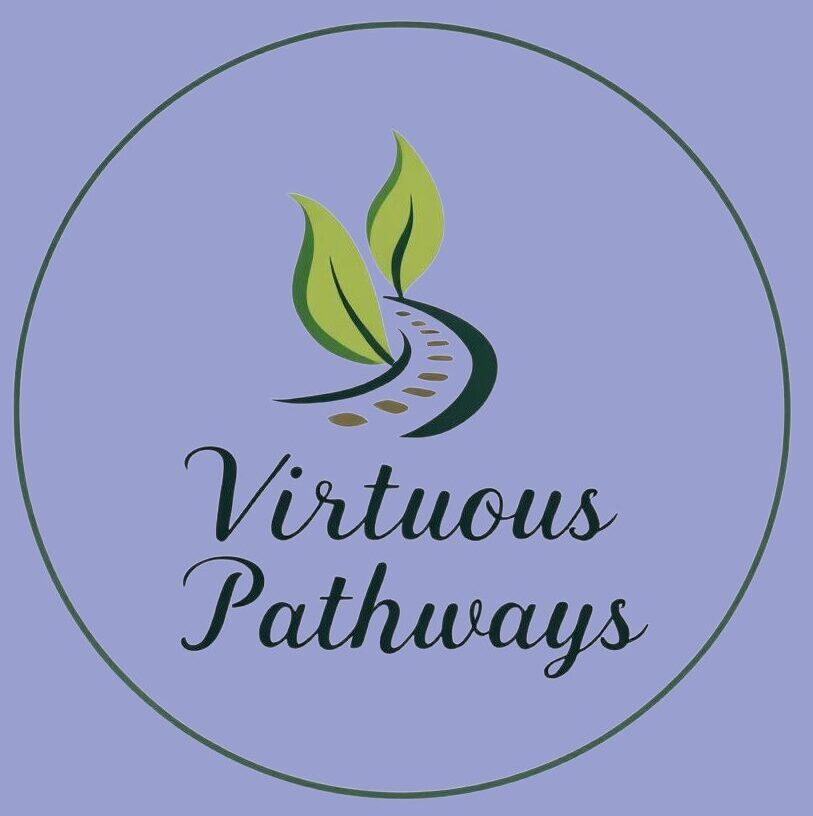10 Steps To Discovering Who You Truly Are
 Figuring out who you really are isn’t always simple. Life gets busy, opinions from friends and family pile up, and sometimes it’s easy to lose track of what makes you, you. I’ve found that self-discovery isn’t about reinventing yourself, but more about peeling back the layers, tuning out the noise, and figuring out what feels right at your core.
Figuring out who you really are isn’t always simple. Life gets busy, opinions from friends and family pile up, and sometimes it’s easy to lose track of what makes you, you. I’ve found that self-discovery isn’t about reinventing yourself, but more about peeling back the layers, tuning out the noise, and figuring out what feels right at your core.
If you’ve been feeling disconnected, unsure of your next move, or just curious about what truly drives you, taking small, mindful steps toward understanding yourself can be a game-changer. Self-discovery isn’t a one-time thing. It’s an ongoing process, but you can get some real clarity by moving through these tried-and-true steps.
Here’s a personal roadmap you can follow, filled with practical guidance and a few examples from my own adventure with self-discovery. Each step helps you get closer to seeing yourself with a little more honesty and kindness. By working through these, you’ll start noticing when you’re genuinely happy, what choices fit your real self, and how to steer in the direction that lights you up.
Step 1: Get Clear on Why You Want to Know Yourself Better
Pretty much everything starts with intention. When I actually took a moment to ask myself why I wanted to know who I was, it sparked a lot of fresh thinking. Maybe you’re feeling lost, or you’re just tired of living on autopilot. Understanding your motivation is a key first step because it shapes how open you’ll be to what comes up during this adventure.
- Are you looking for more confidence in decisions?
- Do you want to feel more authentic with others?
- Are you hoping to align your career or relationships with your values?
Writing down your honest reasons can help keep you going when things get tough or uncomfortable. Sometimes just seeing your motivation on the page makes tackling the next steps feel more purposeful.
Step 2: Spend Real Time Alone (Without Distractions)
Solitude is not the same as isolation. I used to think that being alone meant something was wrong, but real, purposeful alone time lets you hear your own thoughts. Try to carve out even just twenty minutes for a walk, a coffee break, or sitting in your favorite chair without your phone buzzing.
I’ve had my best insights about what matters to me while doing nothing special, just letting my mind wander and paying attention to where it goes naturally. Even a regular solo walk or drive can help you notice patterns in your thoughts or feelings that you might ignore in the middle of chaos. Don’t be surprised if ideas pop up that solve old problems or offer fresh perspectives.
Step 3: Reflect on Your Past Experiences
Understanding yourself often means looking back as well as looking forward. Reflection is a powerful way to notice what’s worked for you and what hasn’t. Ask yourself these questions and jot down your answers:
- What moments in my life made me feel the most alive or excited?
- What decisions do I regret, and what would I do differently now?
- When have I felt proud of myself?
- What events or people have shaped my biggest beliefs?
Patterns from the past can highlight your natural strengths, preferences, or even wounds that still need some care. Don’t rush this part; sometimes reviewing old journals, photos, or messages can stir up honest memories and help you track down those “aha” moments.
Step 4: Try New Things to Expand Your Comfort Zone
Testing yourself in fresh situations can reveal hidden strengths, fears, or interests. When I signed up for a cooking class (despite not being a kitchen pro), I didn’t just learn how to chop onions without crying, I picked up a new appreciation for creativity and teamwork.
New experiences spark parts of your personality you may not see in your usual routine. This could be as simple as joining a club, starting a morning run, taking up painting, or volunteering somewhere new. The goal isn’t to master everything, but to notice how you react, what you enjoy, and where you struggle. Each step outside your comfort zone makes it easier to see yourself from fresh angles.
Step 5: Ask for Honest Feedback
Self-reflection is powerful, but sometimes we miss things that others see. Checking in with people you trust can be super helpful. You don’t need to poll your entire contact list, just a couple of honest friends, mentors, or family members who know you well.
Ask questions like:
- What strengths do you notice in me?
- When do you see me at my happiest?
- Are there any areas where you’ve seen me hold myself back?
Sometimes what’s obvious to others is a blind spot for us, and a little nudge from someone you trust can help you see yourself more clearly. It might even give you the boost needed to step up and embrace what makes you unique.
Step 6: Identify and Write Out Your Core Values
Values are like a compass. Deciding what matters most to you makes tough choices easier, helps you know which opportunities fit, and gives your everyday life more meaning. If you’re not sure what your core values are, start with a values list online or write down words that resonate with you, like creativity, honesty, freedom, or compassion. Then choose the handful that feel the most true for you right now.
Don’t worry if your values aren’t the same as your friends or family members. This is about what actually matters to you, even if it surprises you. Once you’ve named your values, look for small ways to bring them into daily life, like standing up for what’s right at work or being more generous with your time.
Step 7: Listen to Your Gut (And Your Body)
Knowing yourself isn’t just a mental thing; it’s also about getting in touch with your instincts and physical reactions. I’ve learned to pay close attention to when I feel tightness in my chest or butterflies in my stomach. These reactions often point to truths about what I want, what I fear, or what makes me uncomfortable or excited.
Try tracking your emotional and physical reactions in different situations for a week. Notice what makes you tense, energized, or calm. Your body often knows what you want before your mind can put it into words, so tune in and follow those signs.
Step 8: Journal Your Thoughts and Emotions Regularly
Journaling is one of my favorite tools because it gives you a record of your adventure and insights. You don’t have to write a novel. Even a few sentences a day about what you’re thinking, how you feel, or what bothered you can help you spot patterns over time.
Some helpful prompts include:
- What went well for me today?
- When did I feel most like myself?
- What did I avoid, and why?
- What am I grateful for right now?
Looking back on old entries can be a real eye-opener and gives you a sense of growth or areas to revisit. Consistency is key, so even short, regular notes will help you learn about yourself as the months go by.
Step 9: Set Personal Boundaries (And Test Saying No)
Figuring out who you are isn’t just about what you want. It’s also about what you’re not willing to take on, do, or tolerate. Setting boundaries can be tough, especially if you’re used to going along with what others want. The more clearly you can say “no” to things that feel wrong for you, the more space you free up for what actually fits you.
Start by looking for places where you feel drained, resentful, or uncomfortable. Practice politely saying no to things that don’t align with your values or goals, even if it feels awkward at first. You’ll likely find a new level of respect for yourself and more honest relationships with those around you. This practice builds confidence and makes your true self stand out.
Step 10: Embrace Change & Review Your Progress Regularly
You’re going to change over time. Plans, interests, and even values can mix up with new experiences. Self-discovery isn’t about reaching a final version of yourself and putting a bow on it. It’s about accepting that you’ll keep growing and making small tweaks as you go.
Every few months, spend a little time looking back at your adventure. Ask yourself:
- What have I learned about myself recently?
- Do my choices feel more in line with my true self?
- Is there something I want to adjust, explore, or revisit?
It’s possible to outgrow past dreams, old wounds, or limiting beliefs. Taking a fresh look now and then makes your path feel less rigid and more about stumbling upon new things and enjoying the ride.
Quick FAQs for Self-Discovery
What if I feel uncomfortable or anxious during this process?
That’s super normal. Getting to know yourself isn’t always easy, especially when you come across things you’d rather not see. Take it slow, lean on your supports, and remember you don’t have to fix everything at once. Give yourself a break. Self-discovery is ongoing and no one gets it perfect.
How can I tell if I’m living authentically?
You’ll often notice that you feel more relaxed, your decisions come easier, and you don’t worry as much about other people’s approval. If you still feel out of sync, it might be worth revisiting your values or making small changes to your routine or relationships.
What if people in my life don’t like who I’m becoming?
It’s pretty common for others to feel uneasy when you start changing old habits or expressing new preferences. Stay true to what feels right for you, communicate openly, and remember that the best relationships can handle a little growth and change from everyone involved.
Next Steps for Continuing Your Adventure
Self-discovery is a lifelong ride, but you can make big strides by being willing to ask honest questions, try new things, and accept growth as a natural part of life. Even picking one or two of these steps and working on them for a couple of weeks can give a boost to your self-awareness and confidence.
Your To-Do List:
- Block off 20-30 minutes for some uninterrupted solo time this week.
- Pick one prompt from the journaling section and write your thoughts every night for four days.
- Name your top three values and look for ways to make choices that line up with them.
If you’ve got your own self-discovery tips or want to share what’s worked for you, feel free to drop it in the comments below. There’s a good chance someone’s looking for exactly what you already know. Stay curious about yourself, be kind to your mind, and remember—getting to know yourself is one of the most rewarding adventures you’ll ever take.
